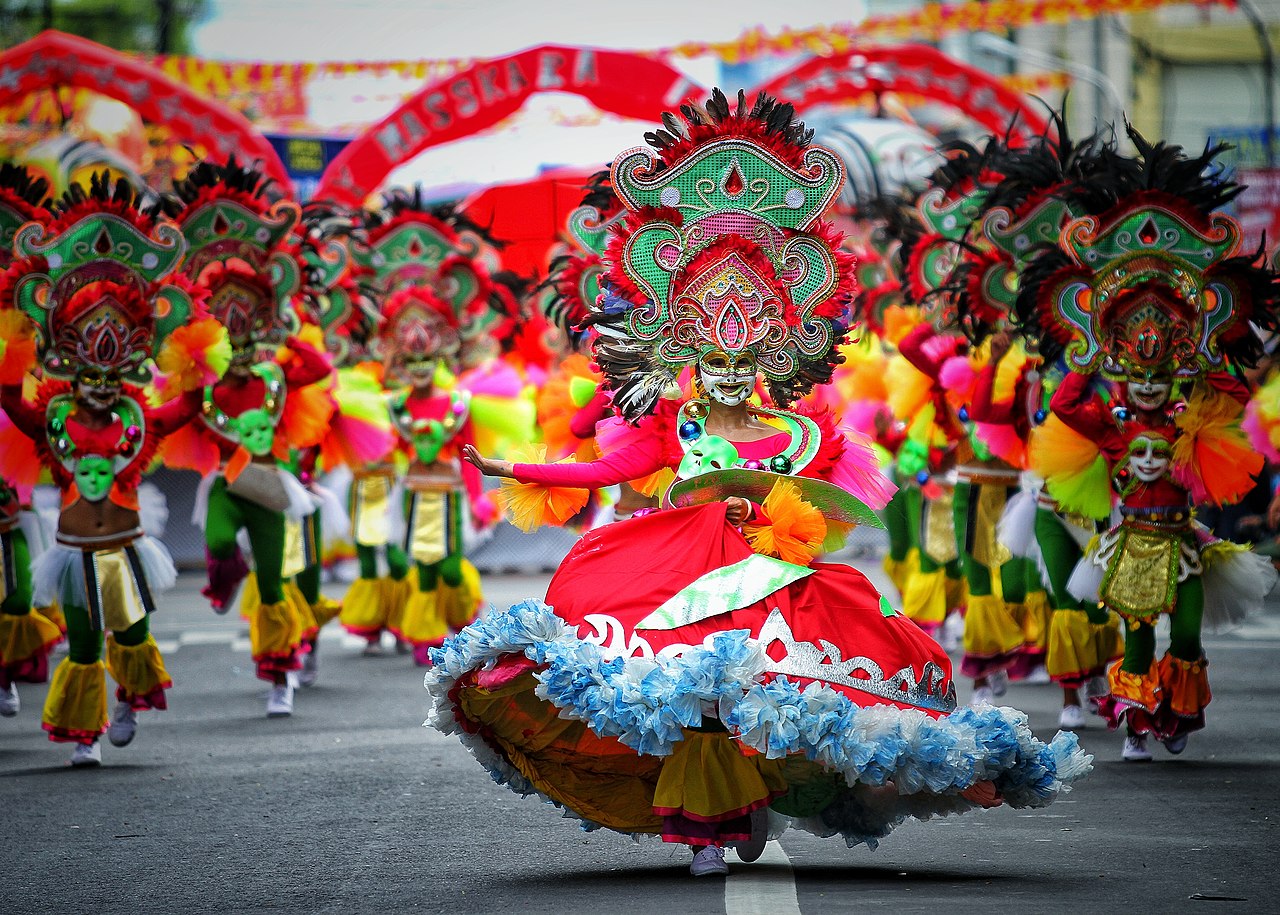50 Useful Filipino or Tagalog Words & Phrases for Travelers
When traveling the Philippines, arm yourself with some useful Filipino or Tagalog words and phrases. Locals like us would love to hear that you try to communicate with us using our very own Filipino language. It is the national language of the Philippines after all, and widely spoken and understood anywhere in the country, whether you are in Luzon, Visayas, or Mindanao.
|
Tip: Why not explore the Philippine capital on a heritage tour and test your Filipino language skills as you connect with the locals? |
Filipino is mainly derived from the Tagalog language, which is spoken in Manila and many parts of Luzon. While Filipino and Tagalog are often used interchangeably, the Filipino language is actually composed of other local languages like Bisaya as well as borrowed words from international languages like Spanish, Malay, and Chinese.
Now, let’s learn some basic Filipino or Tagalog words and phrases, which we categorized according to usage.
Basic Filipino or Tagalog words and phrases for greetings and introductions


1. “Mabuhay!” = “Welcome!”
“Mabuhay” literally means “to live / long live” but it is also a famous Filipino expression when you welcome someone or toast for success.
2. “Magandang araw!” = “Good day!”
You can also use these specific variations:
- Magandang umaga – Good morning
- Magandang tanghali – Good noon
- Magandang hapon – Good afternoon
- Magandang gabi – Good evening
3. “Kamusta?” = “How are you?”
Say this if you want to know how the person is doing.
4. “Ayos lang.” = “I’m fine.”
This is your reply to “Kamusta?” if you are alright and doing well. It is the shorter version of “Maayos lang ako.”.
5. “Tuloy po kayo!” = “Please come in!”
When welcoming guests to your home or to an establishment, this is what you say.
6. “Ano ang pangalan mo?” = “What is your name?”
Say this Tagalog sentence if you want to know someone’s name.
7. “Ako si…” = “I’m…”
Use this when you introduce yourself like “Ako si Juan.”
8. “Taga saan ka?” = “Where are you from?”
Say this Filipino phrase when you ask where the person lives. Another variation is “Saan ka nakatira?” (Where do you live?).
9. “Naiintindihan mo ba?” = “Do you understand?”
Use this Filipino phrase when asking if the person understood what you said.
10. “Opo / Oho” = “Yes”
“Opo” and “Oho” are respectful ways to say “yes” in Filipino. Be sure to add the Filipino words “po” and “ho” to your Tagalog sentences to show your respect to the person you are conversing with, especially to the older ones.
See sample conversation below:
Question: Taga saan ka? (Where are you from?)
Reply: Taga Cebu po ako. (I’m from Cebu.)
11. “Hindi” = “No”
Use this Tagalog word when you deny or reject something.
Useful Filipino words and phrases for social etiquette


12. “Salamat!” = “Thank you!”
You can add “Marami” as in “Maraming salamat”, meaning “Thank you very much!”.
13. “Walang ano man!” = “You’re welcome!”
This is your reply to someone who says “Salamat” (Thank you) to you.
14. “Makisuyo” = “Please”
When you ask a favor, you can say, “Makikisuyo po sana ako.” (I want to ask a favor.) or “Maaari bang makisuyo?” (Can I ask a favor?).
15. “Ingat!” = “Take care!”
You can also add “lagi” after the word “ingat” as in “Ingat lagi” (Take care always!) or “Mag-ingat ka palagi!” (You take care always!)
16. “Pasensya na po / Paumanhin po” = “I’m sorry”
Say these Tagalog phrases if you want to apologize.
17. “Hanggang sa muli!” = “Until then!”
When you part ways, you can tell this to the other person when you look forward to seeing again in the future. You can also say, “Hanggang sa muli nating pagkikita.” (Until we meet again.)
18. “Ang saya!” = “It’s so fun!”
Saya means “fun” or “happy” in Tagalog, so you can say this to express how fun the experience is. You can also add, “ko” as in, “Ang saya ko!” to signify that you are feeling happy.
Practical Tagalog phrases and terms for getting around


19. “Saan?” = “Where?”
Use this Tagalog word if you want to know the location of a place or thing.
20. “Paano?” = “How?”
You may use this Filipino word when asking for instructions on certain things like asking for directions. You say, “Paano pumunta doon?” (How to get there?).
21. “Saan ako bababa?” = “Where do I alight?”
You already know that “saan” means “where”. Just add the Tagalog words “ako” (me) and “bababa” (go down) if you want to know where you should alight or get off, especially when you commute.
22. “Saan ito papunta?” = “Where is this going?”
This is what you say when you want to know the route or destination.
23. “Saan ka pupunta?” = “Where are you going?”
Use this Filipino phrase if you ask where someone is going.
24. “Para po / Dito lang po” = “I’ll get off here / I’ll alight here”
When riding a public transport such as a jeep or bus, these are the Tagalog sentences you say to the driver or conductor if you want to alight.
25. “Paalam” = “Goodbye”
Use this Tagalog word if you want to bid farewell.
26. “Hanggang sa muli!” = “See you soon! / Until then!”
Use this Filipino phrase if wish to see the person again in the future.
27. “Sa uulitin!” = “Until next time!”
Say this Filipino phrase if you want to do the same thing again. This is also another Filipino phrase for see you again or until then.
28. “Uwi na ako” = “I’m going home”
If you want to go home, use this Tagalog phrase.
29. “Magkano ang pamasahe?” = “How much is the fare?”
Use this Tagalog phrase if you don’t know the fare.
30. “Hindi ko alam!” = “I don’t know!”
If you don’t know the answer, just say this Filipino phrase.
Handy Tagalog words and phrases for shopping


31. “Tao po!” = “Hello!”
Say this to call the attention of the store attendant.
32. “Pabili po” = “I’ll buy”
When you want to buy something, you say, “Pabili po ng bigas” (I’ll buy rice).
33. “Ano po ito? / Ano po yan?” = “What’s this? / What’s that?”
“Ano” means “what”, and you just add “ito” (this) and “yan” (that). Use these Tagalog sentences when asking about a particular thing.
34. “Magkano?” = “How much?”
Use this Filipino word when asking for the price of an item.
35. “Magkano lahat?” = “How much is everything?”
This is what you say when you ask for the bill or the price of everything you bought.
36. “Bayad po.” = “Here’s my payment.”
Use this when you want to pay.
37. “Pwede pong tumawad?” = “Can I ask for a discount?”
Use this Filipino phrase when haggling or asking for a discount.
38. “Pili lang!” = “Just pick / choose!”
This is what the seller or store attendant will tell you if he or she wants you to pick or choose the item you want to buy.
39. “Suki” = “Loyal customer or patron”
Don’t be surprised to hear you being called “suki” (loyal customer or patron) when exploring the local markets. The vendor usually says, “Suki, bili na!” (Customer, buy now!).
Handy Filipino phrases and expressions for eating


40. “Kain tayo!” = “Let’s eat!”
Kain is a pandiwa (action word or verb in Filipino) which means “eat”. You say “Kain tayo!” as a courtesy if you want to invite someone to eat.
41. “Gutom na ako!” = “I’m hungry already!”
Make sure that you aren’t “hangry” before you say this.
42. “Gusto ko nang kumain!” = “I want to eat already!”
Say this Tagalog phrase when you’re really hungry and want to dig in.
43. “Masarap!” = “Delicious!”
You may add “sobra” (very) to make it “Sobrang sarap!” (Very delicious!).
44. “Kain ka pa!” = “You eat more!”
Use this Tagalog phrase when you want someone to eat more.
45. “Busog na ako!” = “I’m already full!”
“Busog” means “full” so use this Filipino phrase when you don’t want to eat anymore.
46. “Ayaw ko na.” = “I don’t want anymore.”
It’s what you say when you refuse to do something more.
47. “Wala na akong gana.” = “I already lost my appetite.”
You say this when you already lost your appetite or you don’t want to do anything anymore.
48. “Magdasal tayo!” = “Let us pray!”
This is what you say when you pray, especially before meals.
49. “Saan ako pwedeng umupo?” = “Where can I sit?”
Say this when you want to know the available seats of a particular gathering.
50. “Bahala ka na!” = “It’s up to you!”
Utter this Filipino phrase if you leave it to the other person to decide.
These are just some of the many Filipino or Tagalog words and phrases to learn when you visit the Philippines. As you explore the country, you’ll discover more deep Tagalog words and sentences that will make you connect better with the locals.
And, why not learn some basic Cebuano, Ilocano, Bicolano, Hiligaynon, Waray, and Chavacano as you travel the rest of the Philippines?

